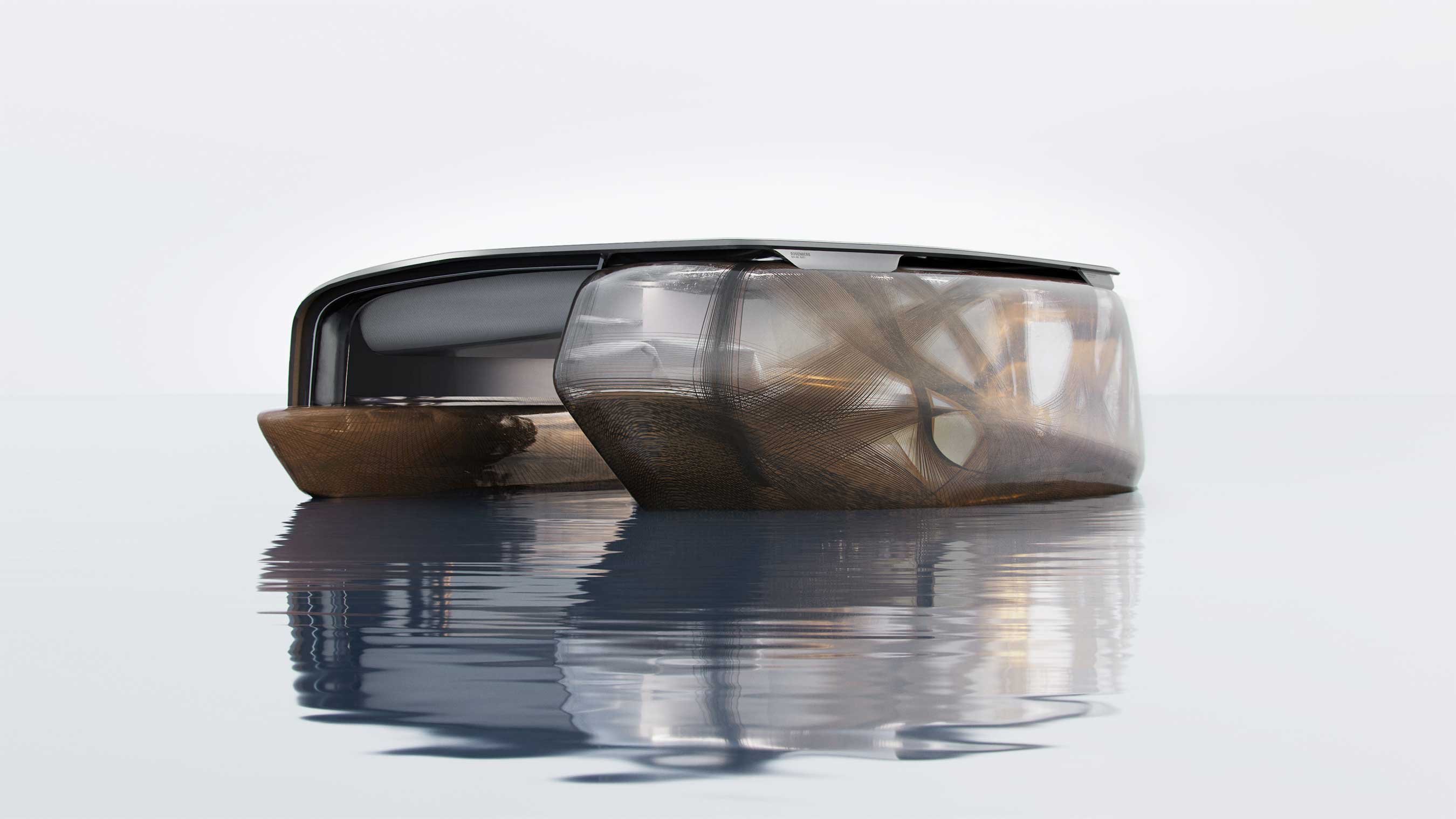
A school project unlike any other comes to fruition with the Blue Nomad floating habitat, a collaboration between the pupils of the Institut auf dem Rosenberg, a private boarding school in St Gallen, Switzerland, and Danish designers SAGA Space Architects.
Blue Nomad is a self-sufficient solar floating habitat, taken from conceptual sketch to prototype stage by a whole-school effort that encompasses practically every discipline and subject. ‘When our students work on projects and have the opportunity to physically create something, then the learning experience is so much better,’ says Bernhard Gademann, president of Institut auf dem Rosenberg.
Blue Nomad Floating Habitat: inspired by climate change
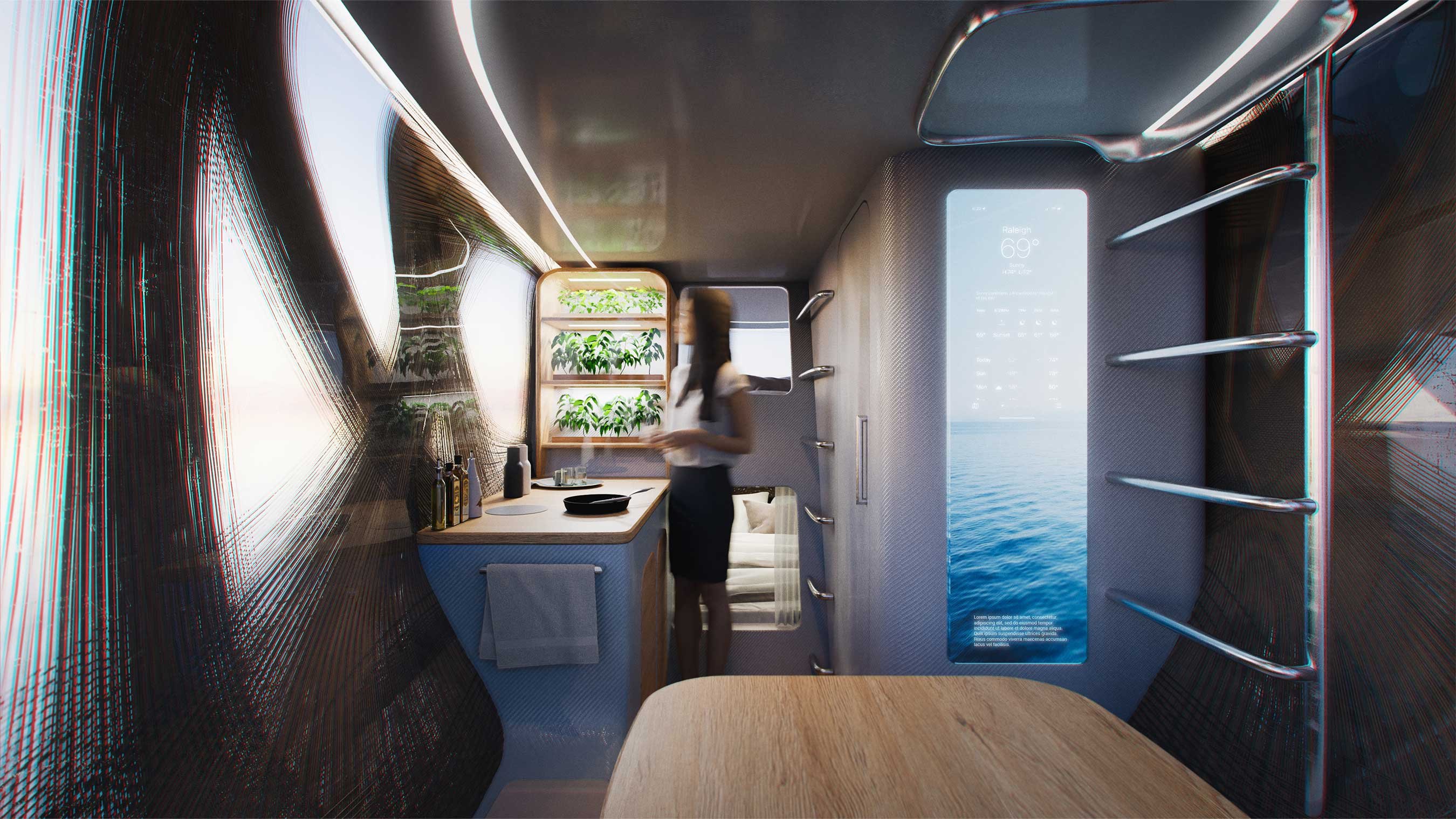
The starting point was to create a practical response to imminent climate change. As Gademann says, ‘With the climate crisis on everyone’s agenda, it’s imperative we find alternative ways to adapt to our planet’s changing environment.’ Rosenberg’s relatively small student body – under 300 – were able to be involved at every stage, just as they were with last year’s Space Habitat project, also undertaken in collaboration with SAGA.
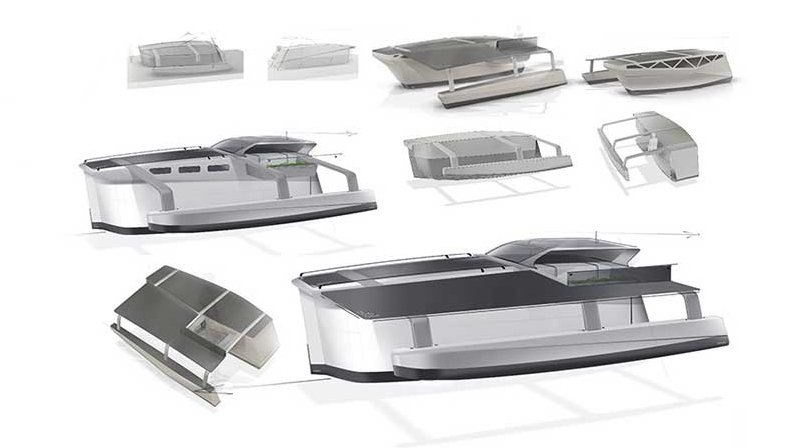
‘By partnering with forward-thinking enterprises and industry experts such as SAGA, we enable our students to solve real-life problems, with the goal of creating a better future for all,’ Gademann explains, and this involved trips to Denmark to collaborate on the construction of the full-size mock-up. The genesis of the Blue Nomad concept came following a student trip to the Norman Foster Foundation in Madrid, followed by an intense concept period of sketching the best form for the vessel.
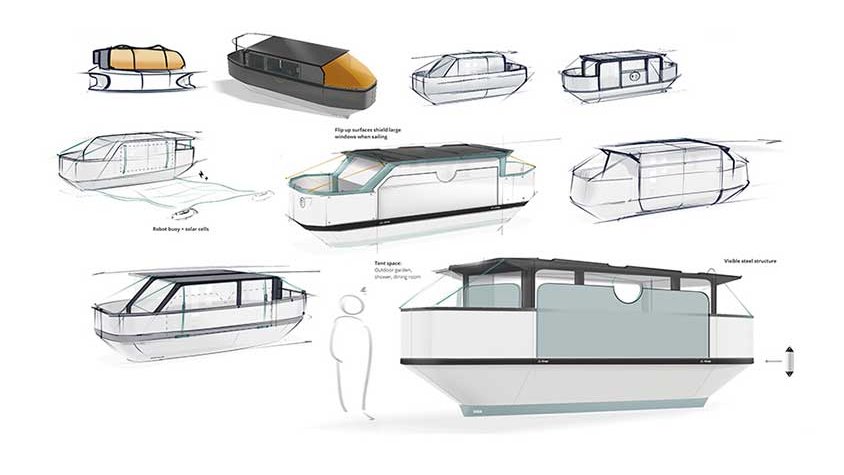
With inspiration from early Polynesian nomadic communities, as well as a little bit of assistance from AI image generation, the Nomad took shape as a three-person craft powered purely by solar energy and made with woven flax fibre. The asymmetric design incorporates a living space into the larger boom, consisting of bunks, a small galley and growing area and the all-important workspace.
‘We were able to integrate this project into our regular courses,’ Gademann says, ‘from physics to art.’ He estimates that around 20-25 per cent of Rosenberg’s students go on to study some kind of ‘classically creative’ course at degree level, and projects like this give the pioneering school its globally admired ethos (it is also, importantly, the most expensive private school in the world).
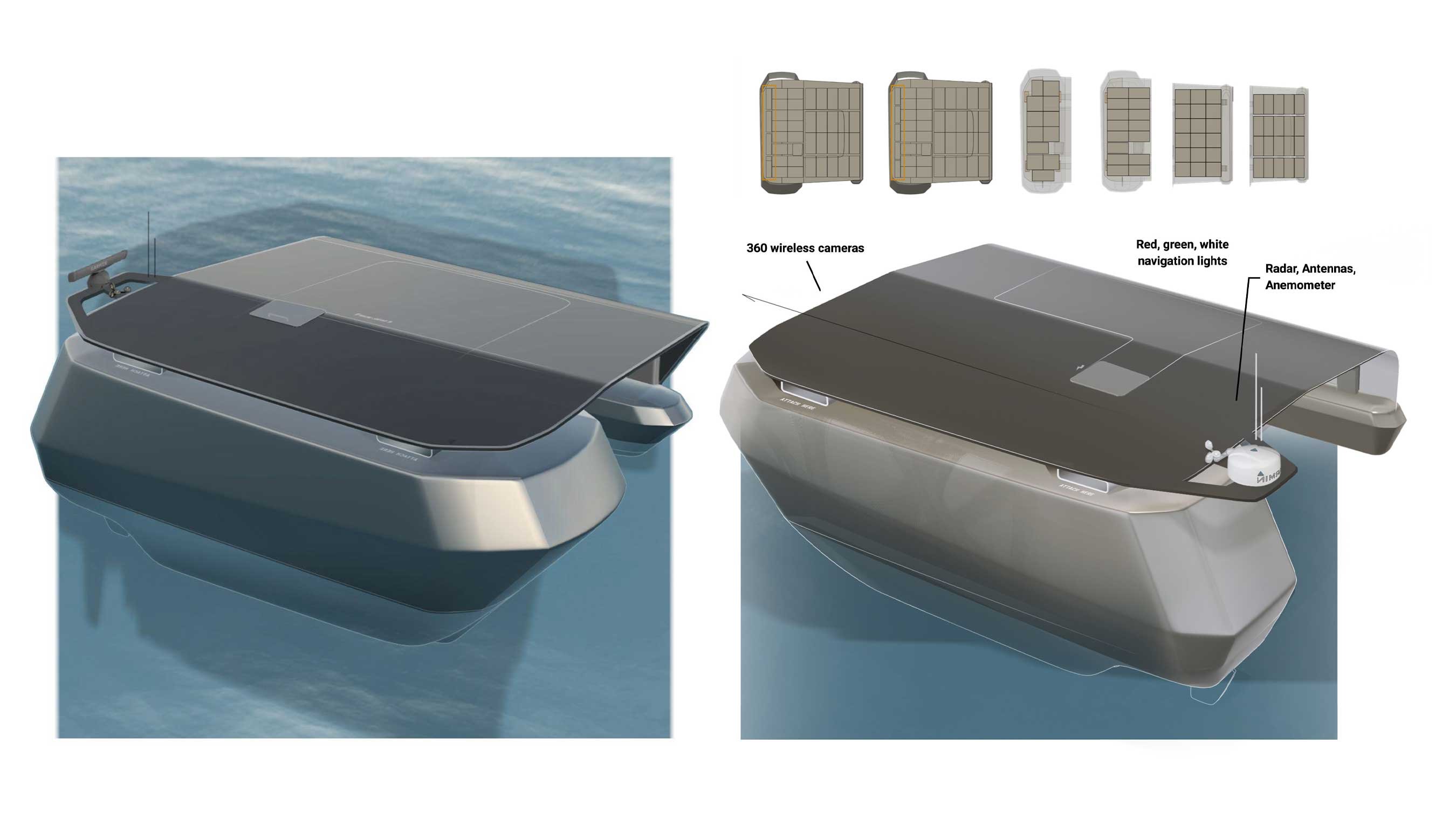
Sebastian Aristotelis, co-founder of SAGA Space Architects, describes the project as ‘climate sci-fi coming into reality, grounded in the vast ocean exploration heritage of Polynesian outriggers’, adding that ‘it is fitting that it was is co-designed with the problem solvers of tomorrow’.
‘Our philosophy is that our students need to be able to connect different domains, from history to physics to aesthetics,’ Gademann adds. Even though the primary challenge was distilling the many, many ideas down into a single vision, Blue Nomad is still the ultimate school project.
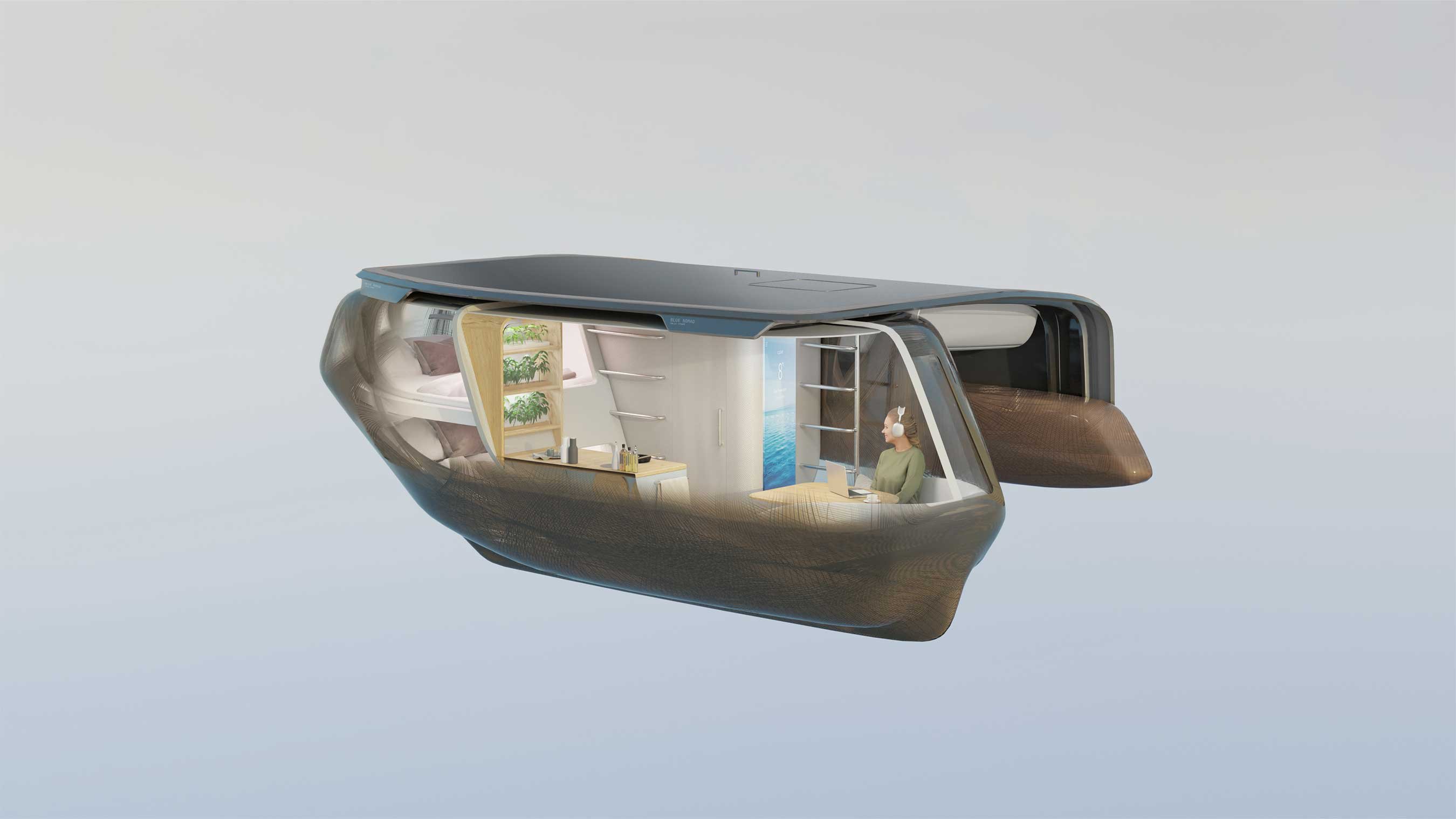
Institut auf dem Rosenberg, instrosenberg.ch
SAGA Space Architects, SAGA.dk







